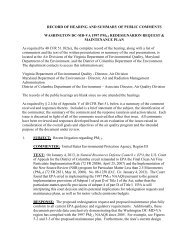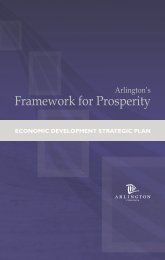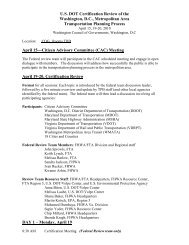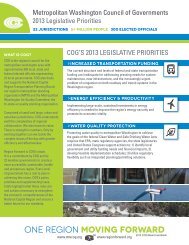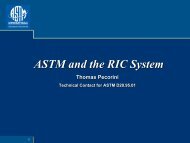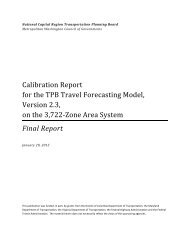PTI Local Government Energy Assurance Guidelines - Metropolitan ...
PTI Local Government Energy Assurance Guidelines - Metropolitan ...
PTI Local Government Energy Assurance Guidelines - Metropolitan ...
You also want an ePaper? Increase the reach of your titles
YUMPU automatically turns print PDFs into web optimized ePapers that Google loves.
The National Response Framework (NRF) 26 and its Emergency Support Functions (ESF) include information<br />
on local government roles and responsibilities, and how they interface with Federal response actions. This<br />
information can also be found in Appendix C of this document. The ESFs under the NRF provide guidance on these<br />
relationships. The NRF is an all-discipline, all-hazards plan that establishes a single, comprehensive framework for<br />
the management of domestic incidents. It provides the structure and mechanisms for the coordination of Federal<br />
support to State, local, and tribal incident managers and for exercising direct Federal authorities and responsibilities.<br />
The function of the NRF is to assist in the homeland security mission of preventing terrorist attacks within the U.S.,<br />
reducing vulnerability to all natural and man-made hazards, minimizing the damage from any type of incident<br />
that occurs, and assisting in recovery. The NRF also incorporates best practices and procedures from incident<br />
management disciplines (homeland security, emergency management, law enforcement, firefighting, public works,<br />
public health, response- and recovery-worker health and safety, emergency medical services, and the private sector),<br />
and integrates them into a unified structure. The need to interact with Federal agencies is an important theme in the<br />
ESF requirements for local governments under the NRF. 27<br />
<strong>Local</strong> Voices<br />
Denver, Colorado<br />
In June of 2010, a substation owned by a local electric utility in Denver, Colorado exploded, cutting off<br />
power to over 31,000 customers. Denver’s Office of Emergency Management took the lead in coordinating<br />
response efforts. The Fire Department was dispatched to the substation, where it took over one hour to<br />
extinguish the 70-foot high flames. The Department also contained the runoff, which potentially contained<br />
PCBs and other hazardous chemicals, preventing it from entering the storm sewer system.<br />
At nearby Rose Medical Center, 15 critical care patients had to be moved to other hospitals because<br />
the facility’s backup generator failed to provide power; emergency power was provided by limited<br />
battery power until the emergency generators were able to come on line. Because Colorado hospitals are<br />
subject to emergency power standards as set by the National Fire Protection Association, the Colorado<br />
Department of Public Health and Environment reviewed the inspection records to assure that testing of the<br />
emergency generators had occurred as required.<br />
Since power was cut off for a prolonged period of time, non-functional traffic signals caused traffic jams<br />
at intersections, requiring response from traffic operations within Denver’s Department of Public Works.<br />
These are but a few of the response actions this incident required—all standard operating procedures<br />
coordinated by the Emergency Operations Center in the Office of Emergency Management.<br />
Underscoring the severity and chronic impacts that such an event can cause, one week after this incident,<br />
another problem at the same substation shut power off to over 6,000 addresses. More recently power was<br />
once again curtailed to 25,000 customers from malfunctions at the substation.<br />
26<br />
http://www.fema.gov/emergency/nrf/.<br />
27<br />
The key response function related to energy is outlined in Emergency Support Function #12 (ESF-12) http://www.oe.energy.gov/emerg_<br />
response.htm.<br />
<strong>Local</strong> <strong>Government</strong> <strong>Energy</strong> <strong>Assurance</strong> <strong>Guidelines</strong> – Version 2.0 | 43



